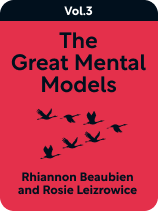

This article is an excerpt from the Shortform book guide to "The Great Mental Models Volume 3" by Rhiannon Beaubien and Rosie Leizrowice. Shortform has the world's best summaries and analyses of books you should be reading.
Like this article? Sign up for a free trial here .
What’s slowing down your business? How could your morning routine be more efficient?
Every system has slow parts that drag the whole system down. Identifying bottlenecks is key to maximizing a system’s efficiency. In The Great Mental Models Volume 3, authors Rhiannon Beaubien and Rosie Leizrowice explain what bottlenecks are, how to identify them, and why bottleneck management is a necessary ongoing process in any system.
Let’s look in detail at how to identify bottlenecks.
Identifying Bottlenecks
The authors point out that one of the difficulties in growing a system is that growth inevitably creates bottlenecks, which are the slowest parts of the system. A bottleneck can be:
- A physical limitation or choke point. If you’re preparing a large, complex meal for a crowd, you’ll hit a bottleneck when you run out of burners on your stove.
- An inefficiency in your methods. When you’re preparing the meal, it’s more efficient to gather all of your ingredients before you start cooking. If you keep stopping your prep work to root around in the pantry or the refrigerator, that behavior creates a bottleneck.
- A resource shortage. If you run out of onions, you won’t be able to prepare any more tomato sauce until you buy more, meaning there’s a bottleneck on your sauce output.
In each of these cases, the bottleneck serves as a limiting factor—it either slows the system down or it limits how much output the system can create. It’s vital to know how to identify bottlenecks.
| The Importance of Identifying Bottlenecks Not only do bottlenecks slow systems down, but they can also lead to more problems if we don’t identify them properly. In Thinking In Systems, Donella H. Meadows points out that when we misidentify a bottleneck, we often try to solve the problem by adding more input, which only creates backlogs and waste. For example, if you’ve run out of burners on the stove, you won’t get the meal cooked any faster by continuing to pile ingredients on the counter—in fact, the added clutter will only get in your way. And left long enough, the backlogged ingredients will start to spoil before you can get to them. Similarly, companies and governments can easily waste money and resources by pouring them into systems that are suffering from undiagnosed bottlenecks. For example, in Basic Economics, Thomas Sowell argues that foreign aid typically fails at its intended purpose (improving life in poor countries) because in many cases the fundamental problem isn’t a lack of money—it’s corrupt leadership, a lack of a skilled and educated workforce, and so on. |
Beaubien and Leizrowice point out that identifying bottlenecks is an ongoing process because removing one bottleneck always reveals another. In other words, when you fix a bottleneck, the system starts growing again until its increased size reveals another bottleneck somewhere else. In the above example, if you had access to more burners, you’d be able to get more components cooking at once. But, eventually, you’d hit another bottleneck when you exceeded your capacity to keep up with all the stirring, flipping, and combining on your own. If you recruited some friends to help you in the kitchen, you’d remove that bottleneck, but only until there were too many people to work effectively in a small space.

———End of Preview———
Like what you just read? Read the rest of the world's best book summary and analysis of Rhiannon Beaubien and Rosie Leizrowice's "The Great Mental Models Volume 3" at Shortform .
Here's what you'll find in our full The Great Mental Models Volume 3 summary :
- How to understand anything in the world by learning a finite set of rules and patterns
- A look at how humans are driven by algorithms
- Why you shouldn't be fooled by randomness






